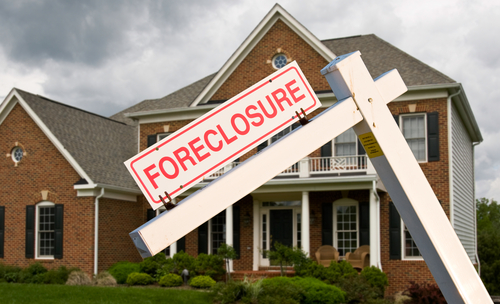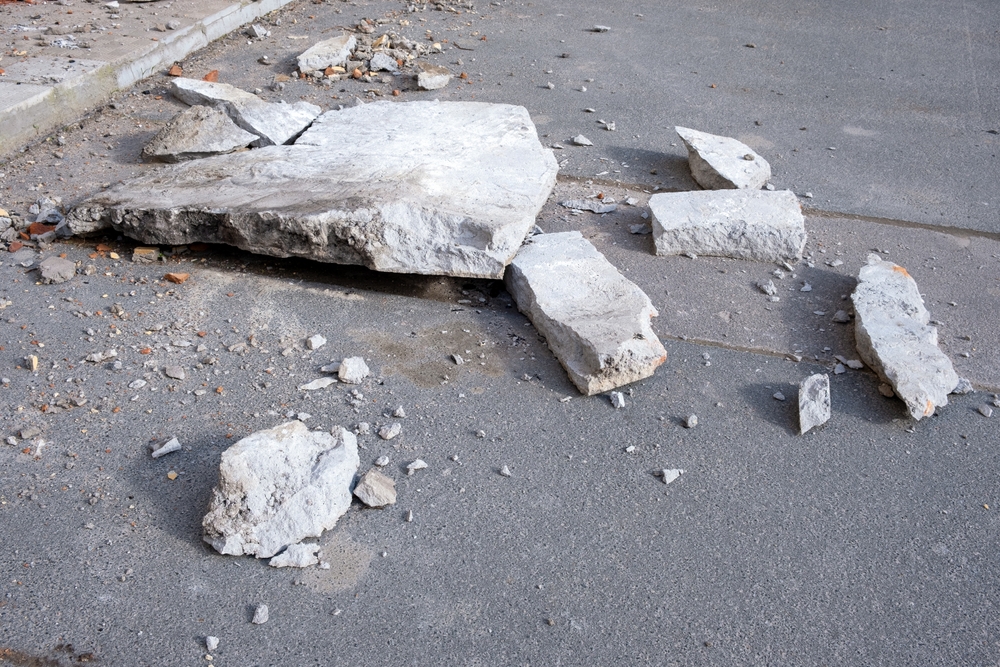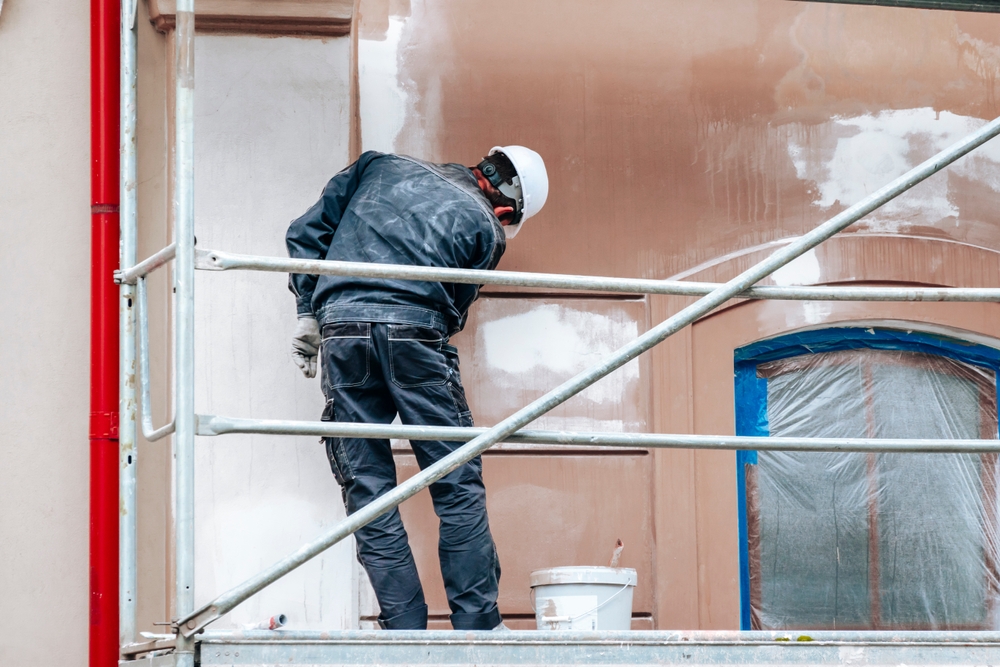March 21, 2024 - Benjamin Ehinger
Foreclosure Cleanouts: An Essential Guide to Property Restoration
CALL NOW 844-762-8449
When a property goes through foreclosure, the new owner—often the bank or a new buyer—is faced with the task of clearing away the previous occupants’ leftover belongings, which can include anything from old furniture to personal items. This process, called a foreclosure cleanout, is an essential step in preparing the property for its next chapter, whether it’s immediate occupancy, renovation, or sale.
Engaging in a foreclosure cleanout can be a significant undertaking, demanding thoroughness and often a sense of urgency to get the property back on the market or in habitable condition. Utilizing a local roll off dumpster rental from Waste Removal USA can simplify the process, allowing for an efficient and orderly removal of debris and unwanted materials from the premises.
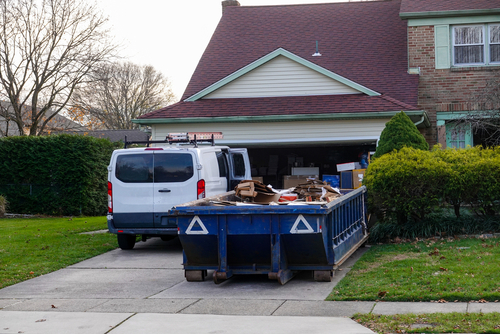 When handling a foreclosure cleanout, your main aim is to clear the property of all unnecessary items, ranging from everyday trash to personal and sensitive documents. Ensuring the property is devoid of debris, old furniture, and any personal items left behind is crucial before it can be put back on the market.
When handling a foreclosure cleanout, your main aim is to clear the property of all unnecessary items, ranging from everyday trash to personal and sensitive documents. Ensuring the property is devoid of debris, old furniture, and any personal items left behind is crucial before it can be put back on the market.
By prioritizing these practices, you contribute to a larger effort of protecting the environment and promoting sustainability in the foreclosure cleanout process. It’s about making conscious choices to ensure that the least amount of waste ends up in landfills.
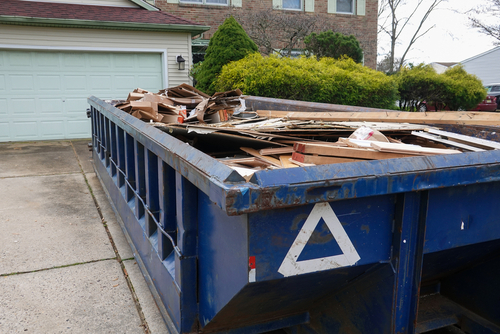 When faced with the task of a foreclosure cleanout, it’s essential to evaluate whether you’ll embark on a DIY project or hire professional service providers. Your choice will impact not only the speed and quality of the cleanout process but also its effectiveness in getting the property market-ready.
When faced with the task of a foreclosure cleanout, it’s essential to evaluate whether you’ll embark on a DIY project or hire professional service providers. Your choice will impact not only the speed and quality of the cleanout process but also its effectiveness in getting the property market-ready.
Key Takeaways
- Foreclosure cleanouts are a vital step in restoring properties for new occupancy or sale.
- Renting a roll off dumpster can streamline the cleanout process, making waste disposal more manageable.
- Proper planning and execution of a foreclosure cleanout can influence the property’s marketability and compliance with local regulations.
Understanding Foreclosure Cleanouts
When a property undergoes foreclosure, it signifies that the homeowner has defaulted on mortgage payments, leading to the lender, typically a bank, taking ownership. Your role in a foreclosure cleanout involves preparing the foreclosed property for resale, which can be a substantial undertaking. Key Components of Foreclosure Cleanouts:- Removal of Debris: Clearing out all trash, unwanted items, and leftover belongings from the previous occupant.
- Deep Cleaning: Ensuring the property is clean and presentable for potential buyers.
- Document Handling: Safely disposing of or returning any left-behind financial documents or personal information.
- Safety Checks: Inspecting the property for any hazardous conditions that need addressing before it’s listed on the market.
The Process of Foreclosure Cleanouts
When you face a foreclosure cleanout, having a structured guide and following a detailed checklist is imperative for efficiency and thoroughness.- Initial Inspection: Begin with inspecting the property diligently. You’ll want to assess the condition of the space and identify any hazardous materials that require special disposal.
- Planning: After the inspection, plan the cleanout. This might include scheduling with a clean out service and renting necessary equipment, such as dumpsters.
Task Description Schedule services Contact clean out services for assistance Rent equipment Secure dumpsters for debris disposal Organize cleaning supplies Stock up on gloves, cleaning agents, etc. - Sorting: Once you commence the cleanout, sort items into categories such as ‘keep’, ‘donate’, ‘recycle’, and ‘trash.’ This will expedite the cleanout process and ensure that valuable items are not discarded erroneously.
- Debris Removal: The brunt of the work involves the removal of debris and unwanted items. Ensure safe and legal disposal, especially of any items that require special attention, like electronics or appliances.
- Cleaning: With the clutter out, deep cleaning is next. From scrubbing floors to repairing any minor damages, cleaning is crucial in restoring the property’s market appeal.
What to Remove During a Cleanout
 When handling a foreclosure cleanout, your main aim is to clear the property of all unnecessary items, ranging from everyday trash to personal and sensitive documents. Ensuring the property is devoid of debris, old furniture, and any personal items left behind is crucial before it can be put back on the market.
When handling a foreclosure cleanout, your main aim is to clear the property of all unnecessary items, ranging from everyday trash to personal and sensitive documents. Ensuring the property is devoid of debris, old furniture, and any personal items left behind is crucial before it can be put back on the market.
Household Junk and Debris
Your first step should be to remove all household junk and general trash that has accumulated. This often includes:- Wrappers, small trash items, and broken household junk
- Old materials that are no longer usable
- Debris from damaged structures or fixtures within the property
Large Items and Appliances
Next, focus on discarding:- Old furniture like sofas, chairs, and tables
- Outdated appliances including refrigerators, washers, and dryers
- Larger fixtures that are no longer functional
Personal and Sensitive Items
Lastly, be thorough in collecting and appropriately disposing of:- Personal belongings such as clothes, memorabilia, and photographs
- Sensitive documents, including stock certificates, 401(k) records, bank statements, and tax returns
Cost Considerations and Budgeting
When you launch a foreclosure cleanout business, understanding your costs is crucial for financial stability. Initially, your investment will cover not only tools and transportation but also legal and permitting fees. Here’s a breakdown of potential expenses:- Labor Costs: Ranges from $15 to $25 per hour. Keep in mind, labor can represent a significant portion of your budget.
- Dump Fees: Disposal fees depend on the volume and type of waste.
- Transportation: Fuel and maintenance for vehicles.
- Supplies: Protective gear, cleaning agents, and home dumpsters if necessary.
- Legal Fees: Incorporating your business and acquiring licenses may require between $1,000 and $5,000.
- Estimate the cost of cleanout jobs carefully, considering the size and condition of the property.
- Prepare for unexpected damages that could set back your budget.
- Evaluate your ongoing expenses to identify cost-saving opportunities.
Environmental Concerns and Recycling
When you undertake a foreclosure cleanout, it’s imperative to address the environmental impact of the debris and items removed from the property. Among the concerns, recycling plays a significant role in mitigating the negative effects of waste.- Electronics: These items should never be disposed of in landfills due to their toxic constituents. Instead, hand over your old TVs, computers, and other electronics to certified e-waste recycling facilities.
- Mattresses: While bulky and challenging to dismantle, you can recycle components of mattresses such as the metal springs and foam. Check for local facilities that specialize in mattress recycling.
- Yard Waste: Rather than sending yard waste to overcrowd landfills, consider composting or local yard waste programs which can reuse biological material in an eco-friendly way.
- Hazardous Waste: Items like paints, automotive fluids, and batteries fall under hazardous waste and require careful disposal to prevent harm to the environment and public health. Your local government or waste management services can provide guidance on how to safely dispose of these materials.
| Material Type | Action |
|---|---|
| Electronics | Locate e-waste facilities |
| Mattresses | Seek specialized recyclers |
| Yard Waste | Use composting or local services |
| Hazardous Waste | Follow local disposal guidelines |
Choosing the Right Cleanout Services
 When faced with the task of a foreclosure cleanout, it’s essential to evaluate whether you’ll embark on a DIY project or hire professional service providers. Your choice will impact not only the speed and quality of the cleanout process but also its effectiveness in getting the property market-ready.
When faced with the task of a foreclosure cleanout, it’s essential to evaluate whether you’ll embark on a DIY project or hire professional service providers. Your choice will impact not only the speed and quality of the cleanout process but also its effectiveness in getting the property market-ready.
Professional Service Providers
Benefits of Hiring Professionals:- Efficiency: Professional service providers, are equipped with the tools and knowledge to handle cleanouts swiftly, reducing the time it takes to prepare a property for the market.
- Thoroughness: A reputable junk removal company ensures that every aspect of the cleanout is comprehensive, including sorting, hauling away junk, and proper disposal or donation.
DIY Versus Outsourcing
- Costs: A DIY approach might appear to save on expenses; however, consider the hidden costs associated with rental equipment, waste disposal fees, and your time investment.
- Labor Intensity: Be realistic about the physical demands and safety risks involved in a foreclosure cleanout. Outsourcing to specialized services can alleviate the heavy-lifting and post-cleanout junk removal.
Preparing Properties for The Market
When a property faces foreclosure, it often requires a thorough cleanout to become market-ready. This entails not only cleaning and decluttering but also repairing any damages and ensuring the home is presented in the best possible light.Repairs and Maintenance
Your initial focus should be addressing any damages within the foreclosed home. An inspection can identify areas that need attention, such as fixing leaky faucets, patching holes, or updating electrical fixtures. Essential tasks like painting walls, repairing flooring, or replacing a worn carpet must not be overlooked as they greatly affect the property’s appeal. Keep a checklist:- Inspect the property thoroughly for damages.
- Prioritize repairs by urgency and impact on value.
Staging and Presentation
Once repairs are complete, staging and presentation play pivotal roles in making the property appealing to potential buyers. A clean, decluttered space allows them to envision themselves in the home, increasing its marketability. Ensure the home is immaculate; mop floors, and clean windows, and consider hiring a professional staging service if your budget allows. Remember, vacant foreclosed homes can feel uninviting, so adding a few touches of decor can make a significant difference.- Deep clean the entire property.
- Use staging techniques to present a welcoming interior.
Working with Property Management
When you engage in foreclosure cleanouts, effective collaboration with property management is crucial. Property managers, real estate agents, and landlords rely on cleanout services to prepare properties for the next occupants. Your role is to ensure the property is cleared of all previous belongings and waste, providing a fresh start. Communication is the cornerstone of your relationship with property management companies. It’s essential to:- Understand their expectations: Each property manager may have unique requirements for how a cleanout should be conducted. Clarify these details before beginning your work.
- Provide clear timelines: Be upfront about how long the cleanout will take and any factors that might affect this schedule.
- Offer comprehensive services: If possible, include services like deep cleaning, minor repairs, or hauling away large items.
- Verify the scope of the cleanout
- Confirm access arrangements
- Discuss disposal methods for various items
- Agree on a completion timeline and any follow-up procedures
Frequently Asked Questions
Before tackling a foreclosure cleanout, it’s essential to understand the costs, necessary equipment, and business opportunities. This FAQ section provides focused answers on common queries related to foreclosure cleanouts.What are the common pricing strategies for foreclosure cleanouts?
When pricing for foreclosure cleanouts, companies often base their fees on the property’s size, the volume of debris, and the complexity of the job. A fixed rate or a pricing structure that takes into account various parameters like labor, dumpster rental, and disposal fees ensures you’re covered for the work involved.What size dumpster rental is best for foreclosure cleanouts?
The size of the dumpster required for a foreclosure cleanout typically depends on the scale of the job. For moderate cleanouts, a 20-yard dumpster is quite common, while larger properties or those with substantial debris might necessitate a 30-yard or even a 40-yard dumpster.How can individuals find foreclosure cleanout opportunities in their vicinity?
To find foreclosure cleanout opportunities near you, network with real estate agents, banks, and property management companies. Also, check local government websites for listings of foreclosed properties that may need cleaning services.What steps are involved in starting a foreclosure cleanup business?
Starting a foreclosure cleanup business involves acquiring the necessary licenses and insurance, investing in proper equipment, and marketing your services to financial institutions and real estate companies. Comprehensive planning and adherence to local business regulations are crucial steps in this process.What is the process for acquiring foreclosure cleanout jobs from banks?
Acquiring foreclosure cleanout jobs from banks typically requires establishing relationships with bank representatives or property preservation companies. Submission of a detailed business plan outlining your services, pricing, and capabilities will help you secure contracts with banks.Are there any franchises available for those looking to enter the foreclosure cleanout industry?
Yes, there are franchise opportunities available for those interested in the foreclosure cleanout industry. These franchises offer the advantage of an established business model, along with training and support, which can be valuable for newcomers to the industry.Where can one find a comprehensive guide to establishing a foreclosure cleaning business?
Those looking for a complete guide to setting up a foreclosure cleaning business can find valuable information from industry-specific websites. A complete guide covers planning, legal considerations, effective sorting and disposal practices, and other crucial aspects of the business.RECENT BLOGS
Our Reviews
Glenda Lanier Prowell
1721758635
I have ordered an 11 yard dumpster to be delivered to my house.Lonier was extremely helpful and answered all my questions. The rate was very reasonable.
Cedric Smikle
1721660395
Amber was extremely professional and courteous. She answered all of my questions and even some that I didn’t know I needed to ask.
Cait Kaider
1721243051
I highly recommend Waste Removal USA for their responsiveness and how the staff work hard to provide exceptional customer service. They have done well by us and our clients. Thank you!
Easom Family
1721223306
Louiner Pierre-Louis Is awesome! Did a great job. Will definitely be using this same company for all my dumpster needs because of his awesome customer service! Thank you!!!
tabitha Vazquez
1720539988
Wonderful and fast customer service!
LATEST BLOGS

